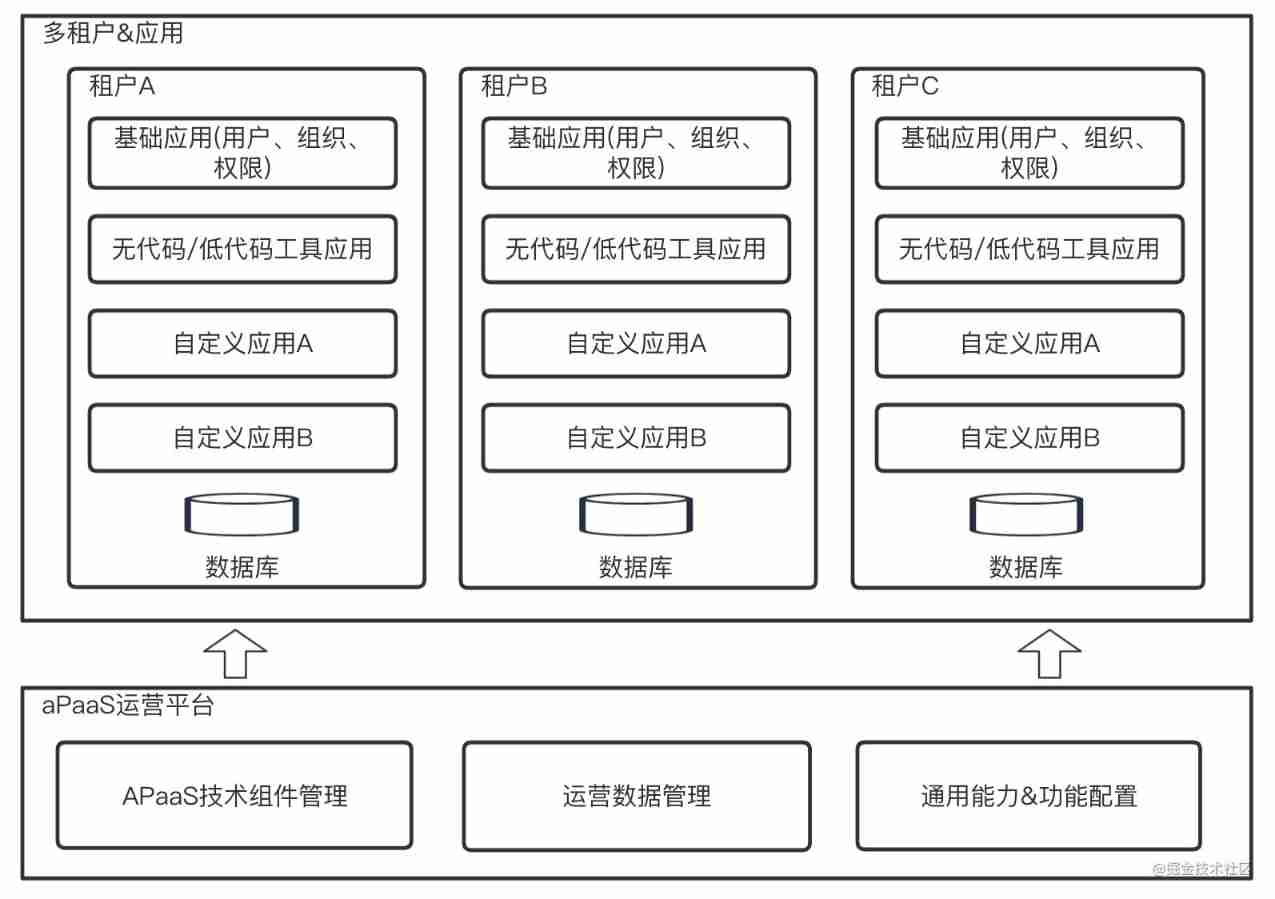当前位置:网站首页>How apaas is applied in different organizational structures
How apaas is applied in different organizational structures
2022-07-05 08:31:00 【Learn open source together】
Low code in recent years / No code is very popular in the industry , Therefore, many platforms in this field are emerging in endlessly , Now it is generally called aPaaS; Combined with some businesses undertaken by the company in the past , Then combine the major aPaaS Platform design , For how to base aPaaS Some thoughts have been made on the construction of enterprise internal and enterprise operation systems , as follows
Requirements describe
Two representative businesses are extracted from the past businesses for discussion , One is the internal management system ( This time, take an equipment manufacturing enterprise as an example ); The other is the operation system of a heavy equipment leasing enterprise ;
The internal management system of the enterprise
Take an equipment manufacturing enterprise as an example , The enterprise mainly produces certain customized electronic products , I hope to build a system to solve the problem of receiving orders from internal sales , To sales and production , Production material preparation 、 production 、 test 、 pack 、 transport 、 Billing 、 Finally, the customer confirms the receipt 、 Customs clearance ; A whole business closed loop around sales orders ; Among them, enterprises already exist ERP System , Mainly to solve the financial problems in the enterprise 、 cost 、 product BOM Etc ; It is thought that this system is mainly used internally , And may need to work with existing ERP System docking , It also needs to connect with the external logistics system and billing system , Of course, it is not ruled out that you want to customize the management and sharing of other business processes and data based on a tool . I won't go into details here .
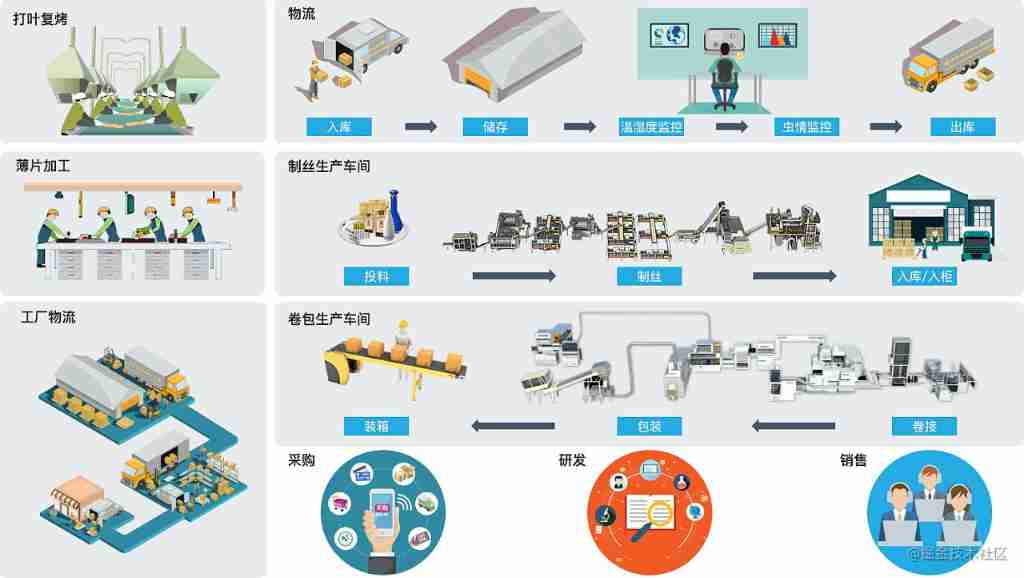
Target system 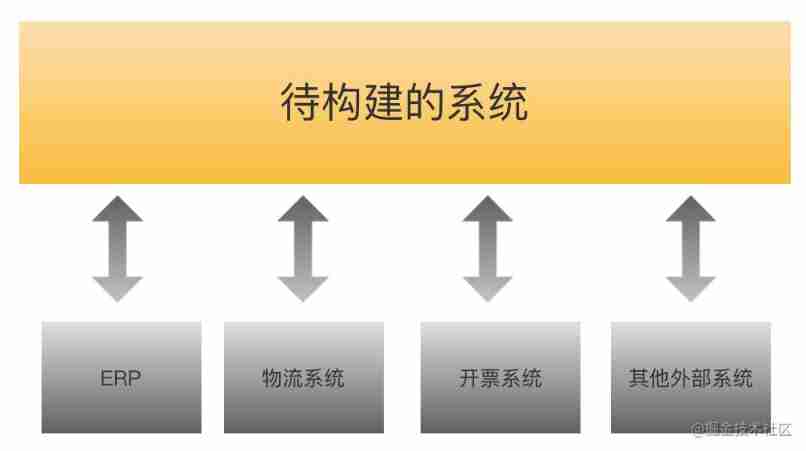
The external operation system of the enterprise
Here is an enterprise that produces heavy equipment and mainly operates the whole business model in the leasing mode ; They hope to make their own equipment , Rent to the corresponding customers in different periods , And according to the quantity / Charge on time . They hope to build a system , On the one hand, with their own WMS System docking , Synchronize to inventory data , At the same time, we also need to track the location of the leased equipment , Operation status monitoring ( Here through the Internet of things technology , It can be regarded as having another set of physical network system ); Sales channels have their own 、 Sales through subsidiaries 、 Sell through your own agency 、 And provide end customers with the ability to view the equipment operation status and lease usage ( Time / The dosage ), And information such as lease contracts ; On the sales network, the agent company and its subsidiaries need to share the profits of the leased equipment ( Enterprises at different levels may share different proportions );
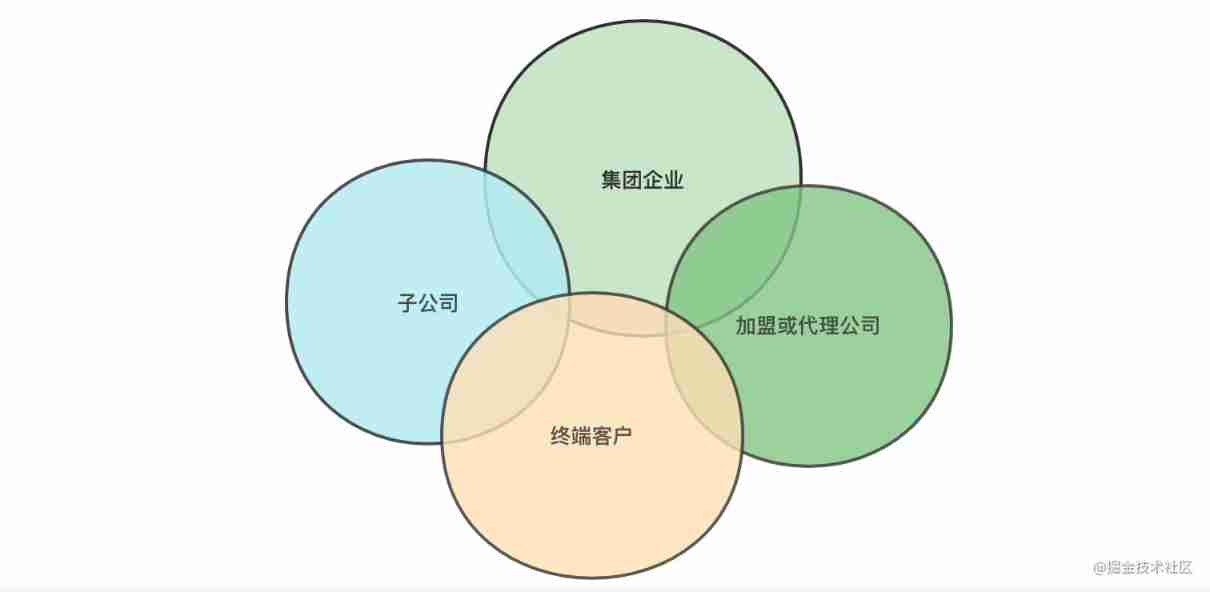
As shown in the figure above , As a group enterprise, the relationship between internal and external , The group has branches , Branches can directly carry out business ; Of course, group companies can also recruit agents directly , Agency companies directly develop customers , Or the group company directly develops customers ; In this process, group enterprises can control all the enterprise information they cooperate with ; If you are building a system , The absolute control is in the hands of the group company ; Each enterprise can maintain its own users, departments and customer information .
Traditional construction ideas
Ideas for the construction of enterprise management system
The construction of this system is relatively simple in the traditional way , If the company has some technology precipitation and accumulation , Directly focus on the business and carry out the serial development of business processes ; Of course, some flexible process and form design tools can be used to assist rapid development . Because it is an enterprise , So generally, data is shared or put into the same database , Basically, there are not many problems of data sharing and multi system and multi module linkage . To put it bluntly , Just do it directly .
Ideas for the construction of enterprise external operation system
For the construction of this operation system , Two factors need to be considered ,1 Whether the starting enterprise has absolute control over the whole system ; The other is data sharing ( The problem of data rights );
If it is directly customized development , We can use public applications and public databases , Database sharing means that the businesses of different cooperative enterprises need to be distinguished in the corresponding business table , Add the corresponding tenant field ( similar SaaS Logical isolation of structures ); The application system needs to call the corresponding business logic and operation according to the identification of the corresponding enterprise Table data .
be based on aPaaS Thinking of construction
be based on aPaaS To build the business system of the above two scenarios , The analysis is as follows :
If you build an internal , The key is to rely on APaaS Custom pages and custom processes for , And business logic control ; If it can't be realized, it may have to be realized by low code .
And the second business ( It seems that there are many enterprises ) Business organization mode , This kind of aPaaS It has a certain degree of complexity to implement ; At the same time, I also consulted many mainstream aPaaS Service provider , Their business in this situation is difficult to support . But I think about it from the perspective of system construction , There are mainly two ideas :
- One is with Custom development business equally , Tenant information is logically isolated , Business processes and pages are configured and implemented by roles , subsidiary 、 External enterprises and customers are managed by departments , Not in the form of multi tenancy ( In case of multi tenancy, the data interaction between tenants should be considered , In particular, business process approval issues involving multiple enterprises );
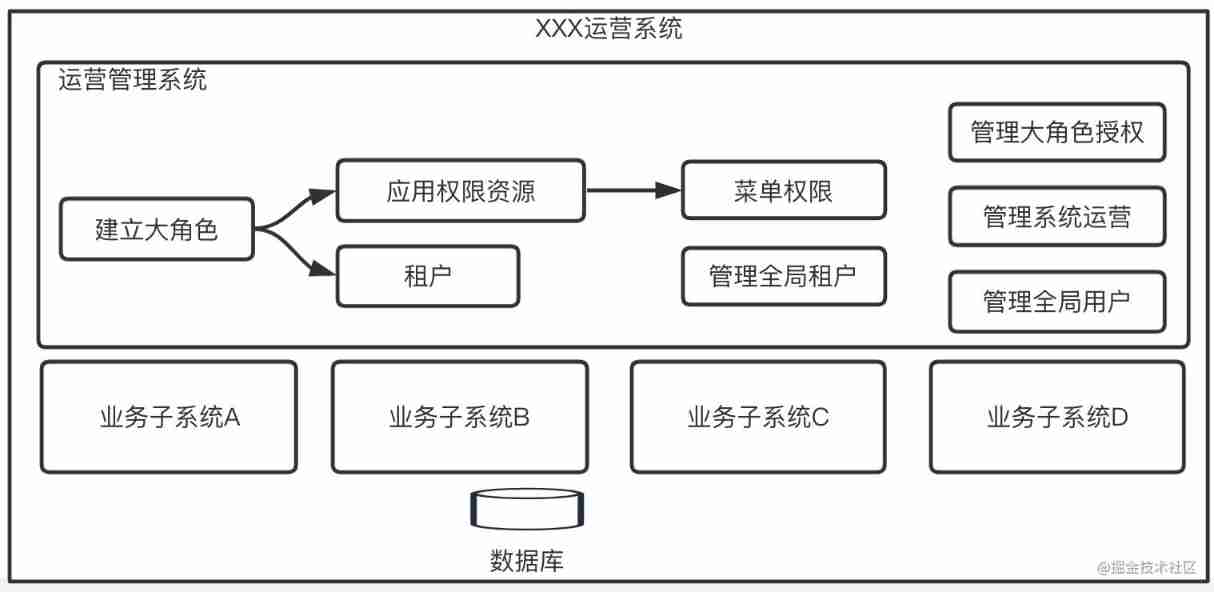
legend : Customize and develop a large platform to realize the authority control of different tenants by establishing roles and permissions , Unified data storage
This mode is common in our custom development business , Or some group customer business development , All businesses are within a large system , Assign permissions by authorization , The data interaction within the same large platform only involves business flow , It does not involve system integration
The construction and application of this mode has the following characteristics :
- The whole platform is a big system , It is divided into modules within the platform , It does not involve the integration between systems
- Data isolation between tenants can be handled by logical isolation , The data isolation effect is achieved by distinguishing tenants through coding or framework
- The system has no concept of multiple applications , Only the concept of module , Application packaging and menu combination through the way of big role
- For different users, it is described in the way of large roles , The internal logic of the program needs to be realized by coding
- In the case of logically isolating tenant data , Coding is difficult , Logical processing is relatively complex
- The whole system development is in a large system , Internal module division or micro service division is easy to be unclear , It is easy to form a big clay ball project
- There is relatively little system integration , It is more about the business and data interaction between various modules in the system , There is no cross system call
- The other is to Independent tenant data isolation , Multi tenant application sharing , Build the same application system for different types of tenants, and then authorize the tenants to use ; As follows :
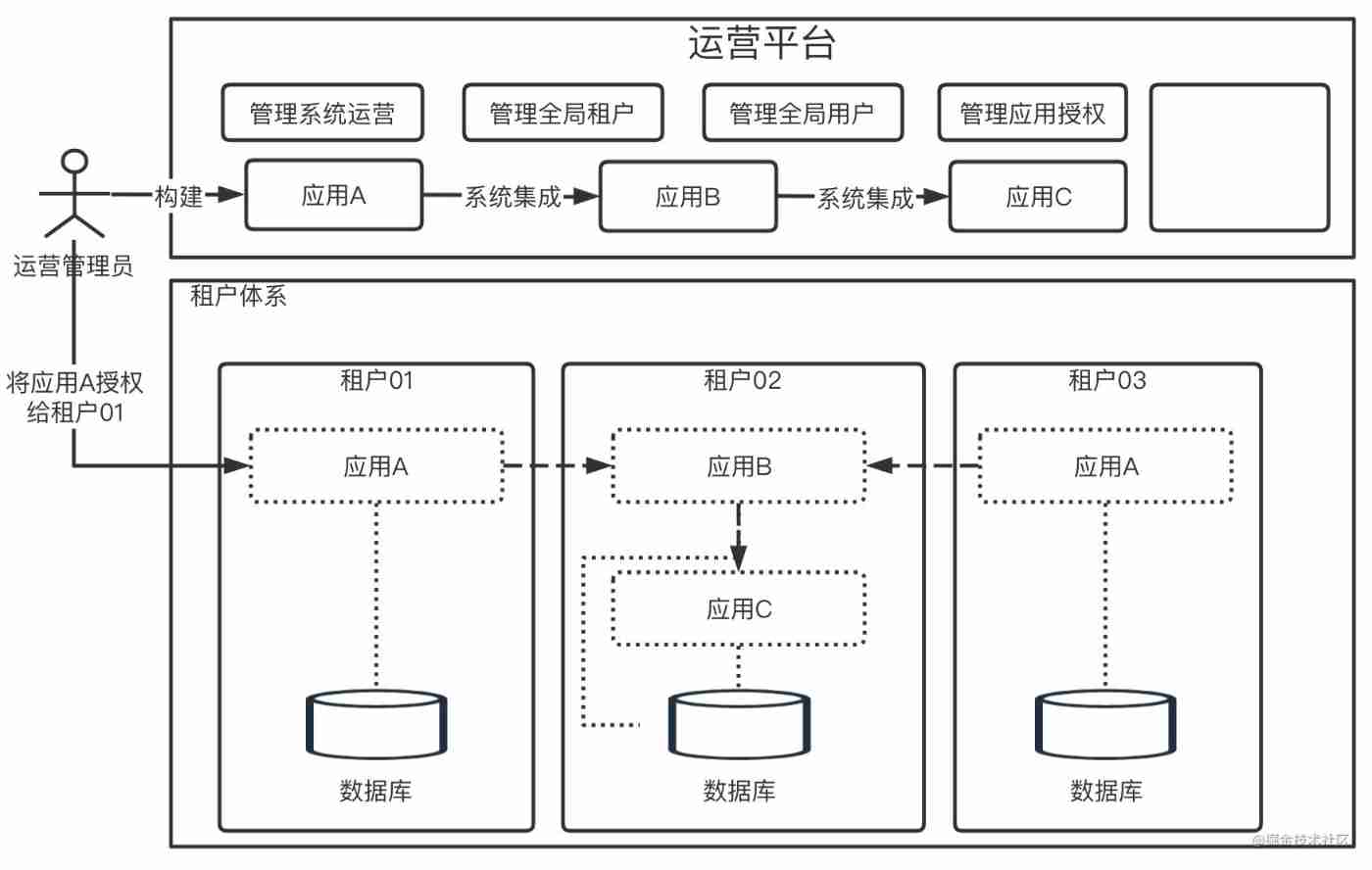
legend : Tenant independent database , Multi tenant application sharing
This structure is characterized by :
- The construction of all applications is managed on the operation platform
- The operation platform has absolute control over each tenant
- Each tenant uses more defined software , There is no need to consider software maintenance
- The tenant loses the custom permission ( Low code capability can also be applied , Authorize to each tenant , This will be more complicated )
- The business data of each tenant is strictly segregated according to the tenant
Build applications uniformly , Then authorize the application to the corresponding tenant for use ; Of course, the application permissions of any tenant can be adjusted on the operation platform , So as to achieve the purpose of unified control ;
- Real multi tenancy SaaS System +aPaaS: In fact, it's really SaaS In the platform , For each tenant aPaaS Ability ( There is no code / Low code ), Each tenant builds its own application based on these tools on the platform ; Here are some features :
- Users using this platform need to have a certain computer foundation and software construction thinking
- Data of each tenant is completely isolated
- The application construction of each tenant can be highly personalized
- The whole platform is operated by tools , Not business systems
If you have different views on the above content , Welcome message discussion
边栏推荐
- Cinq détails de conception du régulateur de tension linéaire
- On boost circuit
- 每日一题——替换空格
- Google sitemap files for rails Projects - Google sitemap files for rails projects
- How to write cover letter?
- Example 004: for the day of the day, enter a day of a month of a year to judge the day of the year?
- 99 multiplication table (C language)
- 实例009:暂停一秒输出
- MATLAB小技巧(28)模糊综合评价
- go依赖注入--google开源库wire
猜你喜欢

STM32 single chip microcomputer -- debug in keil5 cannot enter the main function
![[three tier architecture and JDBC summary]](/img/e0/13d48f2e59b445b9e28e38d45f492d.png)
[three tier architecture and JDBC summary]
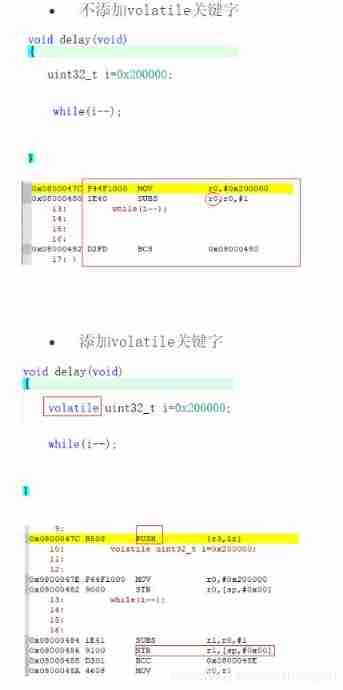
STM32 single chip microcomputer -- volatile keyword
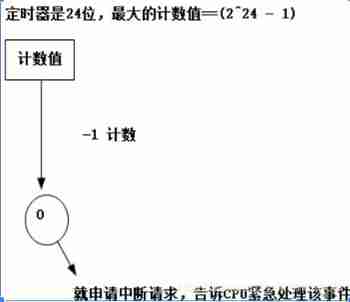
Stm32--- systick timer
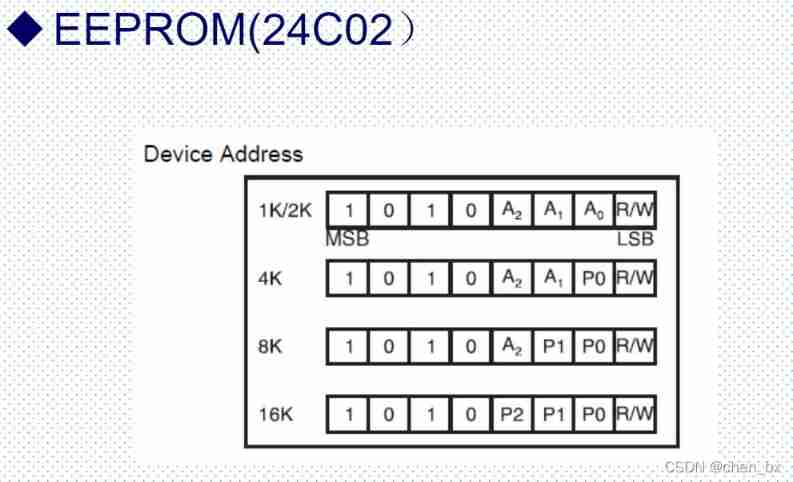
STM32---IIC
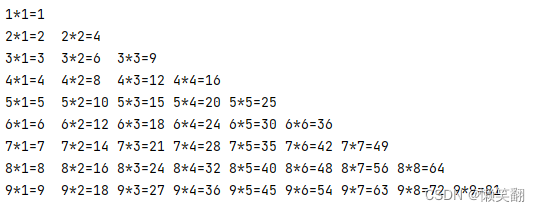
实例008:九九乘法表

One question per day - replace spaces

剑指 Offer 09. 用两个栈实现队列

Example 008: 99 multiplication table
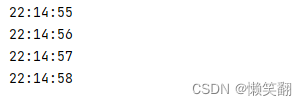
Example 010: time to show
随机推荐
Cmder of win artifact
Shell script
2022.7.4-----leetcode. one thousand and two hundred
Shell script realizes the reading of serial port and the parsing of message
亿学学堂给的证券账户安不安全?哪里可以开户
每日一题——输入一个日期,输出它是该年的第几天
[nas1] (2021cvpr) attentivenas: improving neural architecture search via attentive sampling (unfinished)
Example 005: three numbers sorting input three integers x, y, Z, please output these three numbers from small to large.
Apaas platform of TOP10 abroad
Lori remote control commissioning record
Anonymous structure in C language
Old Wang's esp8266 and old Wu's ws2818 light strip
[three tier architecture and JDBC summary]
List of linked lists
动力电池UL2580测试项目包括哪些
DCDC circuit - function of bootstrap capacitor
Go dependency injection -- Google open source library wire
STM32 summary (HAL Library) - DHT11 temperature sensor (intelligent safety assisted driving system)
实例008:九九乘法表
U8g2 drawing
